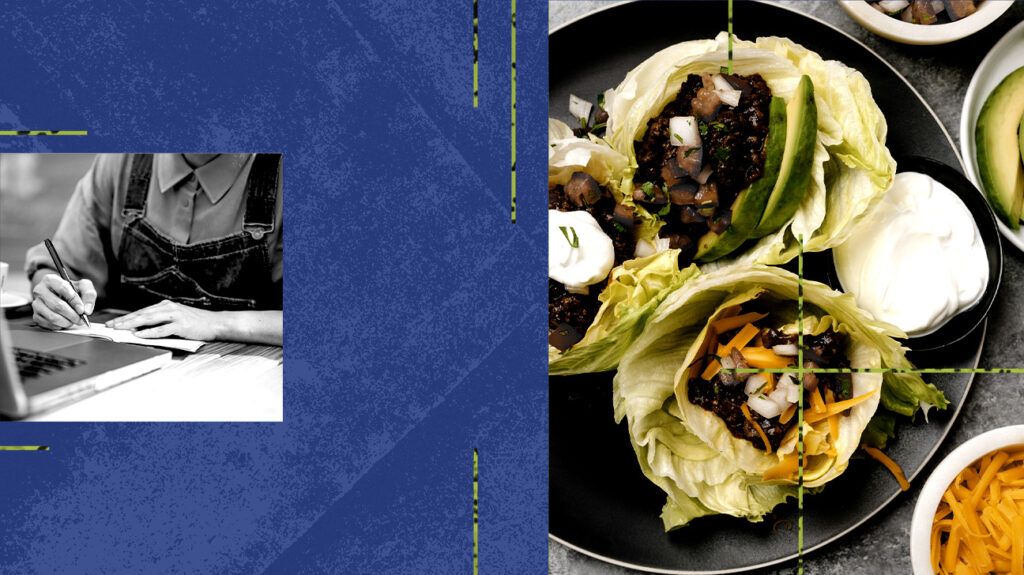When following a keto diet, some people may find it difficult to work out the right foods to eat and when to eat them. Meal plans may help people get used to the diet or stick with it.
The keto diet is a high fat, low-carbohydrate diet. Potential benefits of the keto diet plan include weight loss and fat loss.
Though various sources report different percentages, a keto diet includes
- 55% to 60% fats
- 30% to 35% protein
- 5% to 10% carbohydrates
To stick to these macronutrient ratios, people may benefit from meal planning.

In the keto diet, most of someone’s daily calories come from fats, while lesser amounts come from proteins. Meat, fish, eggs, and dairy feature heavily in the keto diet.
Fiber is also important to include in a keto diet. Fiber
When the body cannot rely on carbohydrates for energy, it must burn fat for fuel. This results in a buildup of acids called ketones in the body. This
People may follow a keto plan for a set amount of time before altering their diet to include more carbohydrates and less fat.
According to a 2020 review, a keto diet may help to improve weight loss and blood pressure, triglycerides, and cholesterol levels. However, these changes may not last in the long term, after 12 months.
Below is a sample 7-day keto meal plan. People can tailor these meals and snacks to their liking, but they should be careful not to exceed their total carbohydrates daily.
Monday
Tuesday
- Breakfast: Scrambled eggs on a bed of sautéed greens with pumpkin seeds.
- Lunch: Chicken mayonnaise salad with cucumber, avocado, tomato, almonds, and onion.
- Dinner: Beef stew with mushrooms, onions, celery, herbs, and beef broth.
- Snacks: Olives and a smoothie with almond milk, nut butter, chia seeds, and spinach.
Wednesday
- Breakfast: Omelet with mushrooms, broccoli, and peppers.
- Lunch: Avocado and egg salad with onion and spices, served in lettuce cups.
- Dinner: Cajun spiced chicken breast with cauliflower rice and Brussels sprout salad.
- Snacks: Nuts, and slices of cheese and bell peppers.
Thursday
Friday
- Breakfast: 2 eggs, fried in butter, with avocado and blackberries.
- Lunch: Grilled salmon with a salad of mixed leafy greens and tomato.
- Dinner: Chicken breast with cauliflower mash and green beans.
- Snacks: Kale chips and slices of cheese and bell peppers.
Saturday
- Breakfast: Scrambled eggs with jalapeños, green onions, and tomatoes sprinkled with sunflower seeds.
- Lunch: Tuna salad with tomatoes and avocado plus macadamia nuts.
- Dinner: Pork chops with nonstarchy vegetables of choice.
- Snacks: Celery sticks with almond butter dip and a handful of berries and nuts.
Sunday
- Breakfast: Yogurt with keto-friendly granola.
- Lunch: Grass-fed beef burger (no bun) with guacamole, tomato, and kale salad.
- Dinner: Stir-fried chicken, broccoli, mushrooms, and peppers, with homemade satay sauce.
- Snacks: Sugar-free turkey jerky and an egg and vegetable muffin.
It may be challenging for vegetarians and vegans to follow a keto diet, as they may usually get many of their calories from carbohydrates. Even sources of nonanimal protein, such as lentils and beans, can be relatively high in carbs.
In the standard keto diet, animal products tend to make up a large portion of meals because these foods are naturally high in fat, high in protein, and low in carbohydrates.
Though challenging, it is possible to follow a vegetarian or vegan keto diet. Those who do not eat meat or fish can replace these products with high fat plant-based foods.
Vegetarians can also eat eggs and some forms of dairy as part of the diet.
People can include the following foods as part of a keto diet:
- Meat and poultry: Chicken, grass-fed beef, organ meats, pork, turkey, and venison.
- Dairy: Butter, cream, whole fat yogurt, and whole fat cheeses, including Cheddar, goat cheese, and mozzarella.
- Fish: Herring, mackerel, and wild salmon.
- Eggs: Whole eggs (pastured and organic when possible).
- Nuts and seeds: Macadamia nuts, pecans, almonds, chia seeds, flaxseeds, peanuts, pumpkin seeds, walnuts, unsweetened nut butters.
- Oils and fats: Avocados, coconut products, olives, and fruit and nut oils, such as avocado, coconut, olive, and sesame.
- Vegetables: Asparagus, broccoli, cauliflower, onions, celery, eggplant, leafy greens, mushrooms, tomatoes, peppers, and other nonstarchy vegetables.
- Condiments: Herbs and spices, lemon juice, mayonnaise with no added sugar, salt and pepper, vinegar, salad dressings with no added sugar.
- Drinks: Almond or flax milk, bone broth, unsweetened teas or coffees, and still or sparkling water.
People may also be able to occasionally enjoy choices such as bacon, berries, and low carb alcohol, such as vodka.
People may choose to limit the following foods on a keto diet:
- Meats: Breaded or processed meats.
- Dairy: Ice cream, milk, and nonfat or sweetened yogurt.
- Fish: Breaded fish.
- Nuts and seeds: Chocolate-covered nuts, sweetened nut butters, and cashews.
- Oils and fats: Margarine, shortening, and vegetable oils, including canola and corn oil.
- Vegetables: Butternut squash, corn, potatoes, sweet potatoes, pumpkin, and other starchy vegetables.
- Fruits: Bananas, citrus fruits, dried fruits, grapes, and pineapples.
- Beans and legumes: All beans, lentils, and chickpeas.
- Condiments: Barbecue sauce, ketchup, maple syrup, sweet dipping sauces, and salad dressings with added sugar.
- Grains and grain products: Baked goods, bread, breakfast cereals, crackers, oats, pasta, rice, and wheat.
- Drinks: Beer, fruit juices, soda, sports drinks, sugary alcoholic drinks, and sweetened tea.
- Others: Candy, coconut sugar, fast food, and sugar.
People may benefit from choosing whole foods that are dense in nutrients and limiting prepackaged foods high in sodium, saturated fats, and trans fats, even if they are keto-friendly.
The following tips may help people stick to the keto diet:
- Set a start date.
- Reorganize the pantry and refrigerator so they do not contain high carbohydrate foods.
- Make a weekly meal plan. This is key to eating balanced meals and preventing hunger.
- Stock up on keto-friendly foods and beverages.
- Read product labels carefully and check the ingredients list and carb content of each item.
- Prepare meals ahead of time and freeze or refrigerate them in batches.
- If hunger pangs occur regularly, try eating five or six small meals instead of three large ones.
- To avoid “keto flu” in the early stages, drink plenty of fluids and supplement with electrolytes.
- Consider temporarily reducing physical activity during the first week or two while the body adjusts to the new diet.
- Discuss any queries or concerns with a doctor or dietitian.
The keto diet is a high fat, moderate protein, and low carbohydrate diet. Meals tend to consist primarily of animal proteins and plant and animal fats with nonstarchy vegetables.
Planning meals on the keto diet can help people adhere to the correct macronutrient ratios, meet fiber goals, and prevent hunger. It can also be helpful to work with a doctor or dietitian to ensure that nutritional deficiencies do not occur.


